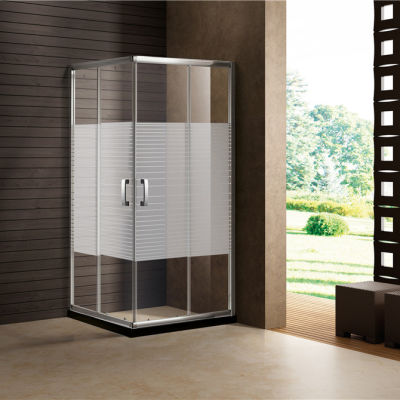The content below involving How to Install a Freestand is definitely intriguing. Read it for yourself and figure out what you think about it.

A successful shower setup calls for mindful planning and a great deal of job. Most of the times, you will certainly need to do 3 sorts of tasks: mounting walls, mounting the plumbing, and finishing wall surfaces.
Prep work
To start with, you should decide on the kind of shower that you wish to mount. It is essential to establish whether the picked shower is capable of managing specific systems as well as can control a safe degree of water via the central heating boiler. Many shower devices nowadays are created to be flexible to various water pressures (such as kept warm water and cool keys).
It is also crucial to take into consideration the water stress and also the planning of the piping as well as drain for the shower
Various Types of Shower Units
Approach
Depending on the type of shower you wish to mount, the shower head have to either be fitted in order to avoid its contact with the water in the bath listed below or the base tray, or it needs to have a check valve.
Before beginning, it is advisable to mark the settings of the shower head as well as control, as well as to plan the pipe-work included. In addition, the water drainage system to remove the drainage will need to be intended. Both settings of the cable course as well as the shower button will additionally need to be taken into consideration if an instant or electrical shower device is being installed.
Utilize the guideline guide supplied with the shower device to fit the shower control.Before fitting the pipes that will supply the water to the shower system, it is very important to remove the water supply. In order to safeguard the pipes, they must be offered a waterproof covering as well as additionally fitted with isolating valves. The pipelines can after that be hidden into the wall surface and also glued over to neaten the overall appearance.
Fit the base tray, shower head, and fittings.
Link the major shower control to the pipes that will be providing the water (This might call for a women screw thread adapter).
Reconnect the water and test the pipelines for any kind of leaks, as some might require firm.
If you are installing an electric shower, remember to switch off the electrical energy supply before making any kind of electrical links. Once these links have been made (there need to be support within the instruction manual), the power supply can be changed back on.
Readjusting Water Pressure to Fit Your Shower
The cold water reservoir can be lifted to a better elevation (in some cases just 150mm (6inches)) by installation a strong wooden support underneath it - perhaps made up of struts and blockboards. If you choose this choice, the primary as well as circulation pipelines will certainly additionally have to be increased to fulfill the brand-new elevation of the storage tank.
Conversely, a booster pump (a single pump or a dual/twin pump) can be fitted. Whichever kind is picked, it has to be connected into the power supply in order to run.
Piping and also Drainage
It is best to use 15mm size supply pipelines, and make the runs to the shower as short and straight as feasible so as to maintain optimal pressure and minimise heat loss. In addition, by reducing the use of joints for pipeline corners, you can reduce the resistance in the flow of the supply of water. You can achieve this by bending the pipelines instead.
The Majority Of Common Blunders
How Do You Install a Shower? Follow This Guide
Installing a Shower at a Glance
Tools & Materials: Level, electric drill, caulk, hole saw, cedar shims, shower unit Step 1: Drill pilot holes Step 2: Prep fixture holes Step 3: Move unit into place Step 4: Caulk corners and base Step 5: Attach door Step 6: Install shower pan Whenever plumbing is involved in a DIY project, people worry about what might go wrong. The truth is that installing a shower isn’t that complicated, and you can save a lot of money by doing it yourself. You shouldn’t need to make any alterations to your plumbing to complete the job, and most of the tools you need will be provided in your new shower kit.
Can I Install a Shower Myself?
Even if you’ve never installed a shower before, you’ll find this to be a project that is perfectly suited for DIYers with a moderate level of experience. Whether you're doing a bathtub conversion or installing a new stall, most of what you need comes in shower kits that you can purchase from a hardware store. The first thing you need to do is determine what type of shower stall you want.
Single-panel stalls are the easiest to install because they come preassembled. All you need to do is put them in place. Multi-panel showers require a few additional steps, but you’ve got more control over the appearance of your unit. Multi-panel units are also much easier to handle if you’re going to do the installation without any help.
Be sure to take all appropriate safety precautions, such as wearing eye protection and gloves. When you’re removing or installing a shower unit, you might kick up debris that could hurt your eyes. You’ll also need to work with equipment that will get extremely hot, so be sure to have safety gloves handy.
Tools and Materials
2- to 4-foot level Electric drill with a 1/8-inch drill bit Caulk 2-inch hole saw Cedar shims The unit itself Before You Begin: Prep the Space
It’s highly important to measure your space accurately before putting the stall in. Measuring from the floor upward and from each corner outward will ensure you’ve got the right measurements. What you’re looking for is where the plumbing apparatuses are going to come through the stall. Transfer these measurements over to the back of your unit by drawing the locations of these holes using a pencil or marker.
Pull out your old shower and make sure to scrape off all the old caulking. Be thorough because you want to work with smooth surfaces for the best installation. Once you’ve pulled out your existing shower, you need to make sure that the floor is clean and dry. The best way to clean debris is with a shop vacuum, as it’ll soak up water and dirt together.
If you’re experiencing any plumbing issues, such as low water pressure, this is a perfect opportunity to solve them. Make sure that the pipes themselves are not in need of patching and clean your showerhead. When you turn the water back on after your project, check the pipes for signs of wear or disrepair. Anything beyond minor repairs should be handled by a plumber, and this is the best time to bring in a professional.
If the floor has any moisture at all, don’t proceed until it’s completely dry. The last thing you need is for the floor to rot or invite mold and mildew into your base. Once everything is dry, apply waterproof wallboard to the walls. This can be attached with screws or nails, then sealed with caulk so that water doesn’t seep into any crevices.

I'm certainly very serious about How to Build a Shower Enclosure for Your DIY Bathroom and I am assuming you enjoyed the entire blog post. If you enjoyed reading our page plz don't forget to pass it around. Thanks a lot for your time. Don't forget to visit our website back soon.
Access certified emergency plumbing excellence.